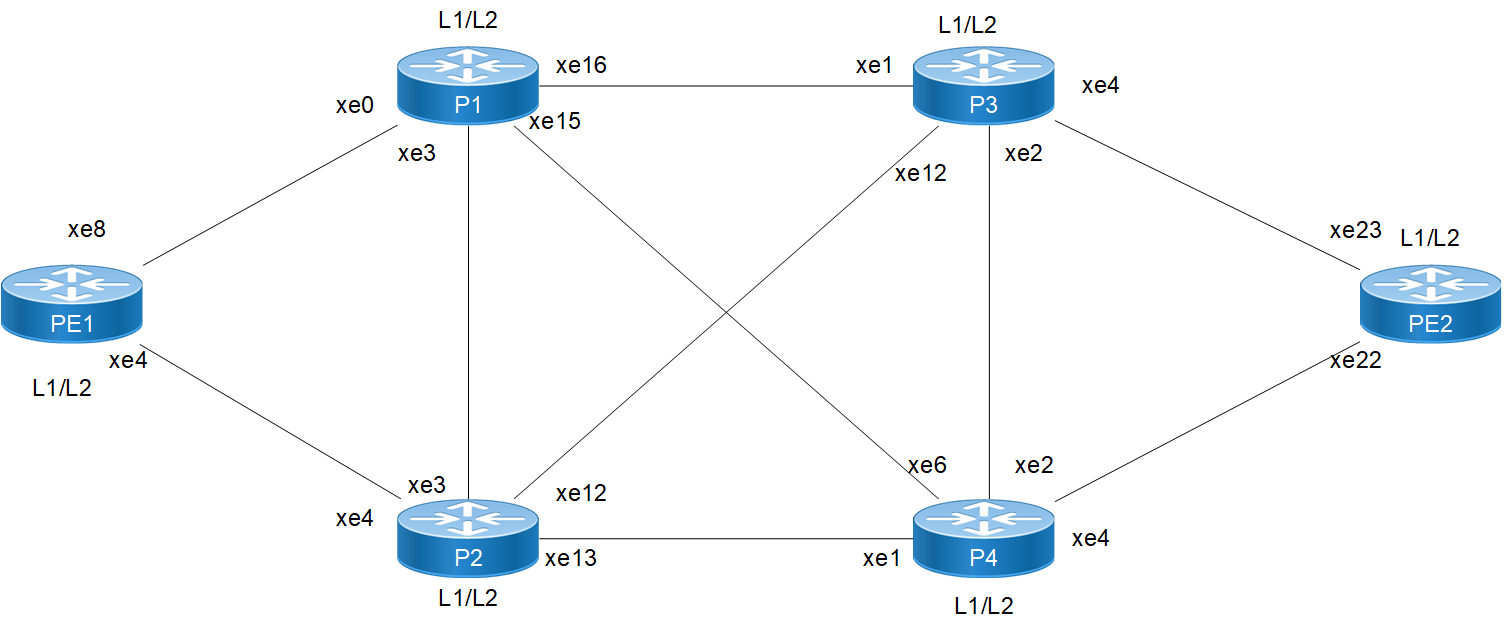Seamless BFD On Qumran2
Overview
Seamless Bidirectional Forwarding Detection (S-BFD) is an extension or enhancement of Bidirectional Forwarding Detection (BFD). This protocol is primarily used in IP-based networks to monitor and detect faults quickly between systems. S-BFD is designed to provide a seamless and rapid fault detection mechanism while minimizing the impact on network resources. It is a simplified mechanism for using BFD with a large proportion of negotiation aspects eliminated. BFD provides a smooth and continuous operational experience for applications in a network.
Feature Characteristics
S-BFD consists of an initiator (a network node hosts an S-BFD Initiator) and a responder (a network node hosts an S-BFD Reflector). In network traffic, S-BFD detects a link failure, and the traffic immediately switches to a backup path. The traffic returns to the primary once the link is up or the corresponding path becomes active.
S-BFD works on the following concepts:
• Initiator: A network node hosting an S-BFDInitiator.
• Responder: A network node hosting an S-BFDReflector.
• S-BFD Initiator: In a network, an S-BFD session performs a continuity test by sending S-BFD packets to a remote entity.
• BFD Discriminator: A BFD Discriminator is allocated for an SBFDInitiator.
• SBFD Reflector: In a network node, S-BFD session gathers incoming S-BFD control packets from local entities and generates responses to S-BFD control packets.
For more information, see the Seamless BFD for SR-TE in the OcNOS Segment Routing Config Guide document.
Benefits
The following are the benefits of using S-BFD on Q2:
• Quick provisioning: S-BFD can be deployed in any network with less time and effort, ensuring the configured environment is rapid and efficient.
• Improved control: S-BFD continuously monitors the network, predicts the network blocks, and diverts the network traffic to back up path.
• Flexibility for network nodes: S-BFD easily adapts to network functionalities, ensuring efficient traffic distribution and minimizing congestion.
• Initiating path monitoring: Path monitoring in a network involves regular monitoring and checking the communication path between two network endpoints.
S-BFD provides quick convergence time is 50 milliseconds.
Prerequisites
The following prerequisites are mandatory before installing S-BFD:
• Configure ISIS.
• Configure Segment Routing policy.
Configuration
S-BFD is supported only on Qumran2 platforms. The topology below describes active routers PE1,P3,P4, PE2 and as a backup PE1,P2, PE2 with lowest preference.
For more information on the S-BFD configurations, see the Seamless BFD for SR-TE Configuration in the OcNOS Segment Routing Config Guide.
Topology
In a network, a node can be either the initiator or the reflector, the initiator sends an S-BFD packet for the detection to the reflector. The reflector reflects the received S-BFD packet. As soon as the S-BFD packet is received from the initiator, it checks that the S-BFD discriminator in the packet is the same. If it doesn't match the packet is discarded. If it matches, the reflector reflects the packet.
The following topology illustrates the S-BFD process.

S-BFD on Qumran2
For this topology to work, ensure that these following conditions are met
Note:
1. Ensure that prefix SIDs are unique globally.
2. Use L1 or L2 routers throughout your SR domain.
Validation
PE2-7048#show bfd session
BFD process for VRF: (DEFAULT VRF)
=====================================================================================
Sess-Idx Remote-Disc Lower-Layer Sess-Type Sess-State UP-Time Interface Down-Reason Remote-Addr
1281 45.45.45.45 MPLS LSP Single-Hop Up 00:01:15 po1.10 NA 45.45.45.45/32
Number of Sessions: 1
PE2-7048#show segment-routing policy detail
Policy-Name: 1 Color 1 End-point 45.45.45.45 Tunnel-ID: 1
Admin-Status: UP Oper-Status: UP for 00:01:13
State Transition Count: 1
CSPF Retry Limit: 100 CSPF Retry Interval: 10
S-BFD is enabled.
Binding SID :
BSID: 25600
Alloc mode: Dynamic
Oper State: Programmed
CP ID: 1, Active
Preference: 300 Path Type: Explicit CP Origin: Local
CP state: Valid
Segment List:
Total no. of segments: 2
Segment0[LABEL]: Label :16042
Segment1[LABEL]: Label :16045
Out-if: po1.10 Out-label-stack: 3/16045
Backup ftn_ix: 6 (calculated based on s-bfd)
Attributes:
Configured:
Explicit segment-list Name: 48-42
Last Recorded Error: Next-hop resolution failed for SID-LIST, 00:02:15 ago
CP ID: 2, S-BFD backup
Preference: 100 Path Type: Explicit CP Origin: Local
CP state: Valid
Segment List:
Total no. of segments: 2
Segment0[LABEL]: Label :16043
Segment1[LABEL]: Label :16045
Out-if: xe0 Out-label-stack: 3/16045
Attributes:
Configured:
Explicit segment-list Name: 48-43
Last Recorded Error: Next-hop resolution failed for SID-LIST, 00:02:15 ago
For more information, see the Seamless BFD for SR-TE Validation in the OcNOS Segment Routing Config Guide document.
Implementation Examples
To achieve minimal traffic convergence time and a quick switch over to backup if there is any link failure in the primary path.
1. Configure the S-BFD Segment Routing policy NAME where the data enters the traffic on a network and decides which path to flow.
2. Configure the S-BFD discriminator A.B.C.D at the outgoing or existing data from the network traffic.
3. S-BFD starts monitoring the segment routing policy path, once it is mapped to S-BFD.
Troubleshooting
1. Check if the discriminator is learnt at initiator.
2. Check if the learnt discriminator is the same as the segment routing policy end-point address.
3. Check if the segment routing policy is mapped to S-BFD is operationally up.
Abbreviations
Acronym | Description |
S-BFD | Seamless Bidirectional Forwarding Detection |
SR | Segment Routing |
SID | Segment Identifiers |
ISIS | Intermediate System to Intermediate System |
Q2 | Qumran |
Glossary
The following provides definitions for key terms used throughout this document.
ISIS | ISIS protocol provides the solution for connecting and managing virtual networks within a data center or network infrastructure |
SR | Segment Routing is a method where the sender of a packet can partially or completely specify a route in a network through which a packet is sent |
SID | A segment routing mapping server allocates Segment Identifiers (SIDs) for prefixes and ranges in an ISIS segment routing domain |
Ingress | Flow of data traffic into a network |
Egress | Outgoing or exiting data traffic from a network |